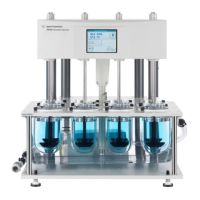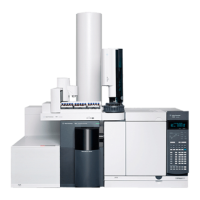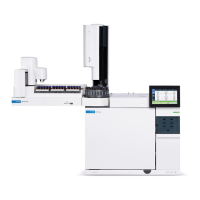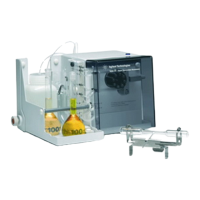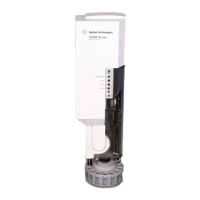Agilent 708-DS Dissolution Apparatus
Training Manual
Revision A September 2010
P/N: xx-xxxx
As mentioned, each of the tolerances programmed on this screen will
trigger the appropriate error messages and warnings to display when
deviations greater than these occur. The settings are stored and applied
to each method executed with the 708-DS dissolution apparatus.
Figure 5-5. Tolerance Settings
If the alarms of the apparatus are enabled, an out of tolerance value will
cause an alarm, but not stop the dissolution method. The specific
parameters and their tolerances that fall into this category are:
Temperature – Bath and Vessel
Spindle Speed (RPM)
5.3.3. Manifold Down Lead Time / Manifold Down Duration
The measurement of vessel temperatures is performed by individual
temperature probes located on the manifold. Two additional parameters
are available to ensure accurate temperature reporting at sample time
points. They are both related to the control of the manifold and are
displayed in the screen shown in Figure 5-4.
The Manifold Down Lead Time is the time, in seconds, that the
thermistors are allowed to equilibrate in solution before a temperature
reading is taken. The Manifold Down Duration is the amount of time, in
seconds, that the manifold remains at its sampling position. For example,
let’s assume a sample time point is setup for 30 minutes, and the Lead
Time and Duration are setup for 30 seconds. These settings would trigger
the manifold to lower at 29:30 and remain in position until 30:30. To allow
for sufficient equilibration time of each probe in the dissolution media, the
sum of the Lead Time and Duration must be no less than thirty (30)
seconds. The vessel temperature is sent to the printer, if enabled, at the
end of the Manifold Down Duration.
5.4. Dosage Delivery Modules (DDM)
The Dosage Delivery Module option of the 708-DS dissolution apparatus offers
the user a mechanism to introduce dosage forms into the vessels in a consistent,
repeatable manner.

